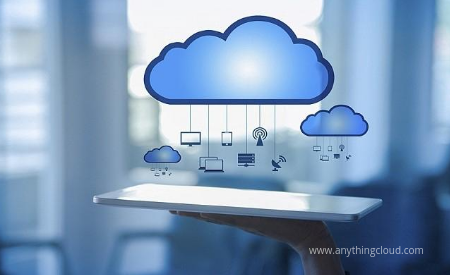
8 Cloud Computing Trends that will change the game in 2018
2017 ended and 2018 started with several trends in everything and anything. But when you have so many predictions and forecasts around you, the result is utter confusion. Which is why we waited for the dust to settle in (or should we say we waited for all the noise to calm down), so that you can understand what to anticipate. Especially if you’re thinking of investing in cloud computing, migrating to cloud or wondering how to cope up with the trends.

We have some strong Cloud Computing trends that surely can’t be ignored. For example, microservices architecture, DevOps and containers are some of the trends that will become the new normal. Of course, that is looking at the trends from a microlevel. At the macrolevel, Cloud Computing will be led by Artificial Intelligence, IoT and Machine Learning.
1. Make way for multi-cloud
Enterprises are getting more comfortable with the multi-cloud environment (implies use of more than two cloud computing services). Experts feel that most enterprises are getting comfortable with engaging with more than a single cloud provider to manage their workloads and are now usually search for multiple cloud service providers.
Multi-cloud environment is also able to support some enterprises in terms of quality of services, capability and price benefits. If they wish to scale up, they can do so at a reasonable cost. Workload portability and optimization (supported with open source technology) helps to scale up workloads in the cloud.
2. Move over ‘cloud adoption’, ‘cloud optimization’ is here
If we talk about cloud adoption, most of the enterprises have already adopted it. Now is the time for cloud optimization in terms of multi-cloud management, data optimization, and a solid governance model.
There are an increasing number of Enterprises that are now realizing that to meet their business requirements they need multiple cloud types. The question is not if Enterprises should consider cloud adoption or not but how effectively they can manage and administer all the cloud vendors. Experts also say that data optimization will be a core focus for all the future-forward Enterprises. Data optimization entails integration, security, encryption and sovereignty.
3. Containers, orchestration, and microservices will be ‘hot’
In 2017, there was enough buzz around containers, orchestration, and microservices but in the coming year, these will be hot. IT leaders feel the need to match workloads with the right environment. This is the reason that there will be a wider adoption of these technologies across and these technologies will become mainstream. Kubernetes will positively emerge as the cloud computing standard. There will be several software vendors already planning to support Kubernetes, which makes it easier to move applications between on-premises and the cloud. While containers and microservices go hand in hand, orchestration tool makes it easier to manage things. The responsiveness to changing market needs will increase and the overall cost of adopting changes will reduce. There is flexibility that marks the growth of multi-cloud strategies and hybrid cloud environments.
4. DevOps to become critical for CIOs
The speed and quality at which software is released is increasingly becoming critical. It is exactly the reason why DevOps is becoming important. There are many who are adopting automation, cloud-native tools such as Kubernetes, and teams will deliver at a larger scale without adding more resources. More and more CIOs are turning towards are pressurized to automate DevOps to meet the ever-changing business challenges and resource crunch.
5. Serverless will become popular
2018 is also expected to be a year that will belong to serverless. Cloud instances are not required to be allocated anymore and enterprises can forget about the need to provision servers. Function as a service or FaaS stands for the next level of the cloud journey as it helps developers to concentrate on the servers that it will run on.
Serverless Cloud Computing helps to improve efficiency allowing developers to connect and extend cloud services, easily address their applications and use multiple use cases. If we think Serverless Cloud Computing, the major benefits are less time and effort spent, and it streamlined release of new updates.
6. Software-as-a-service will shift to platforms
Experts predict that Software as a Service providers will transform to complete platform providers as they will focus on making their platforms more user-friendly. There will be an increased demand to customize convergence with next-gen technologies like IoT and AI. SaaS vendors are likely to have a fierce competition for their platforms.
7. AI analytics will become popular
The fact that AI analytics will be in high demand through 2018 is undisputed. Predictive analytics can help application owners to accumulate data insights and actionable recommendations. With the help of analytics, the behavior of infrastructure and apps can be predicted. There are many IT analytics vendors who are focusing in this area and trying to introduce many AI features in the dashboard.
8. Cloud Security will embrace new operating models
Cloud security concerns will not magically disappear in 2018. In fact, data custodians must be prepared for more serious security breaches in this year. There are cloud security service providers will increase their commitment to cloud security, try new operating models to focus on automation and speed. The focus will also be to deliver powerful new solutions to automate and simplify operations for the entire security stack.
Conclusion
Mobility is on the rise and cloud is getting global. In 2018 and the years to come, cloud technology will grow with a continued focus on adoption, development and security of cloud computing solutions.

The blog describes the trends well. Out of these, security and privacy are the major concern. Almost all organizations have adopted this technology. Cloud Computing is being continuously improved and updated. The trends mentioned in the blog are being implemented to get the better version of cloud computing.